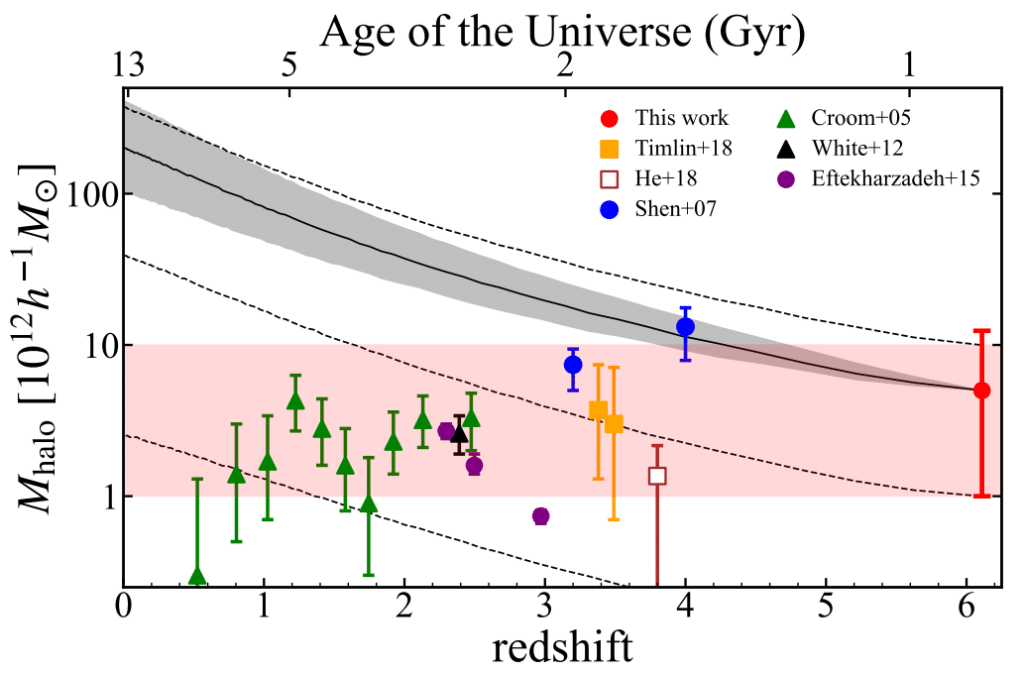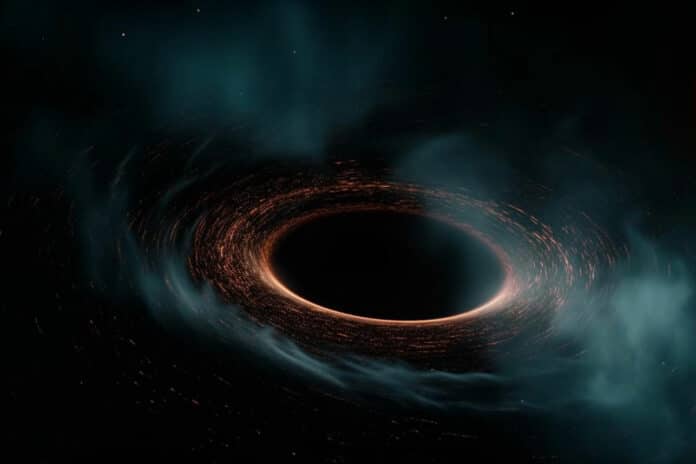According to the current ΛCDM theory, the tiny density fluctuation of dark matter in the early universe grows and subsequently collapses into dark matter halos (DMHs). These halos continuously accrete and hierarchically merge to form high-mass DMHs. Galaxies are nurtured in the center of DMHs, and almost all galaxies harbor a supermassive black hole (SMBH) in their centers.
Beyond a specific size, these black holes become active, emitting huge amounts of radiation, and are then called quasars. These are believed to be triggered by enormous dark matter halos (DMH) surrounding the galaxy, which direct matter toward the core and feed the black hole.
For the first time, scientists from the University of Tokyo team examined hundreds of extinct quasars and discovered that this behavior has remained remarkably constant. The mechanism of quasar activation may have repercussions for the evolution of the entire universe, which is unexpected given that many large-scale processes exhibit variation throughout the universe’s existence.
Measuring the mass of DMHs is quite tricky, given the actual nature of dark matter is still being determined. Its existence is known because of its gravitational impact on large structures. Dark matter can only be measured by observing its gravitational effects on things.

This task becomes more challenging at large distances. But, Professor Nobunari Kashikawa from the Department of Astronomy and his team kept trying to find answers to long-standing astronomy questions: How are black holes born, and how do they grow?
The scientists were interested in exploring supermassive black holes, the largest kind. If not for the fact that some of them become so enormous that they start to emit tremendously potent jets of matter or spheres of radiation that, in any event, form what we call quasars, these would be very challenging objects to study. These are so strong that we can now use current methods to observe them even at great distances.
Kashikawa said, “We measured for the first time the typical mass for dark matter halos surrounding an active black hole in the universe about 13 billion years ago. The DMH mass of quasars is pretty constant at about 10 trillion times the mass of our sun. Such measurements have been made for more recent DMH around quasars, and those measurements are strikingly similar to what we see for more ancient quasars. This is interesting because it suggests a characteristic DMH mass that seems to activate a quasar, regardless of whether it happened billions of years ago or now.”
Scientists used multiple surveys of the sky, incorporating a range of instruments, the main one being Japan’s Subaru Telescope, located in the U.S. state of Hawaii. The project was originally began in 2016.
Journal Reference:
- Junya Arita, Nobunari Kashikawa, Yoshiki Matsuoka, Wanqiu He, Kei Ito, Yongming Liang, Rikako Ishimoto, Takehiro Yoshioka, Yoshihiro Takeda, Kazushi Iwasawa, Masafusa Onoue, Yoshiki Toba and Masatoshi Imanishi, “Subaru High-z Exploration of Low-Luminosity Quasars (SHELLQs). XVIII. The Dark Matter Halo Mass of Quasars at z ∼ 6,” The Astrophysical Journal: September 8, 2023, DOI: 10.48550/arXiv.2307.02531.
